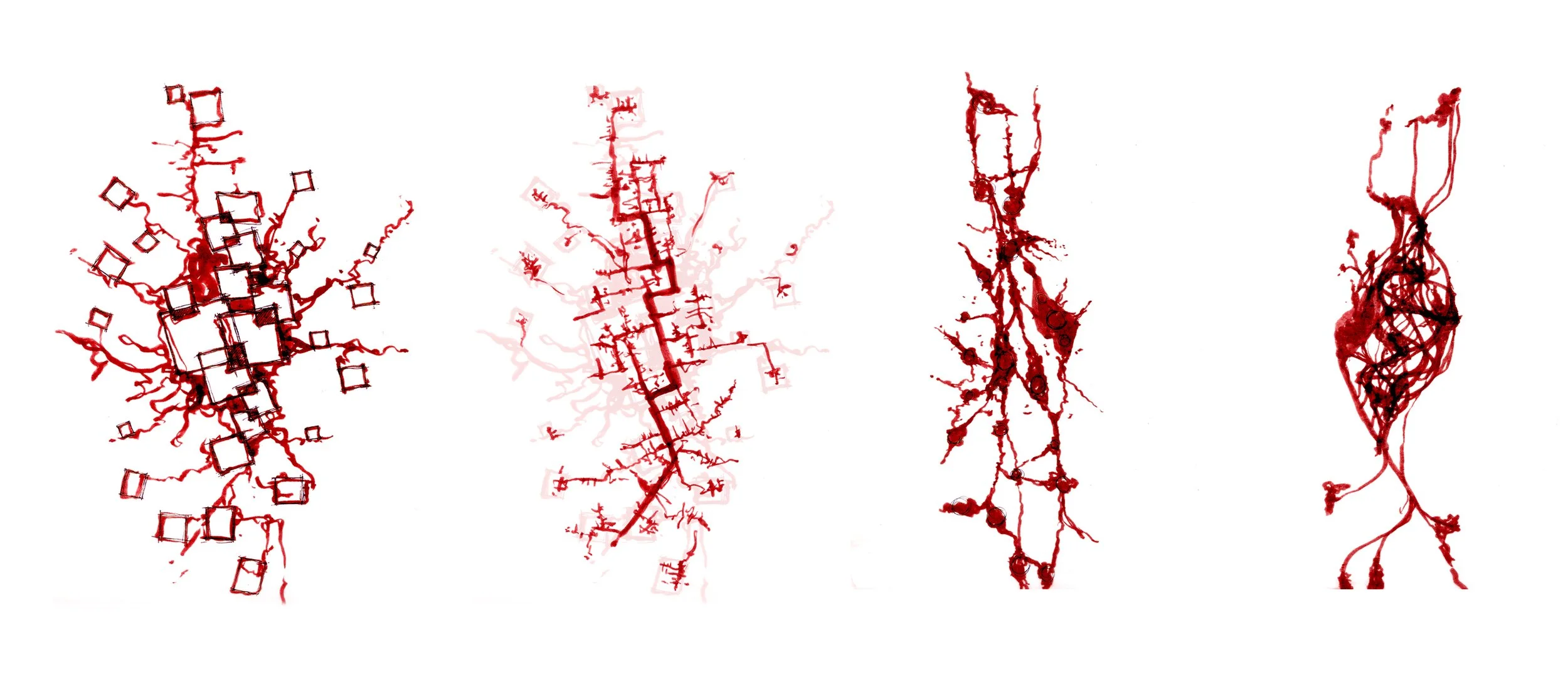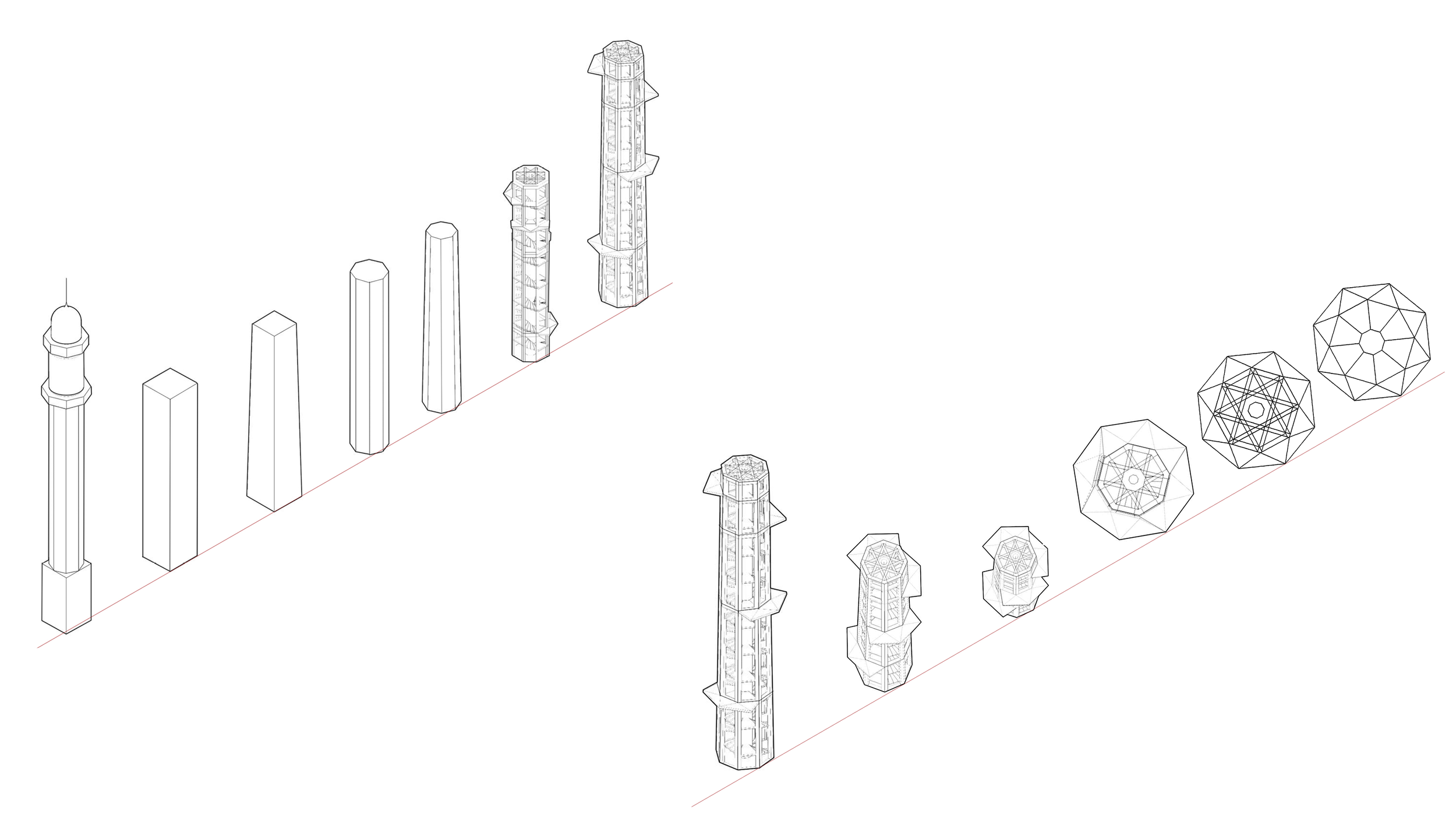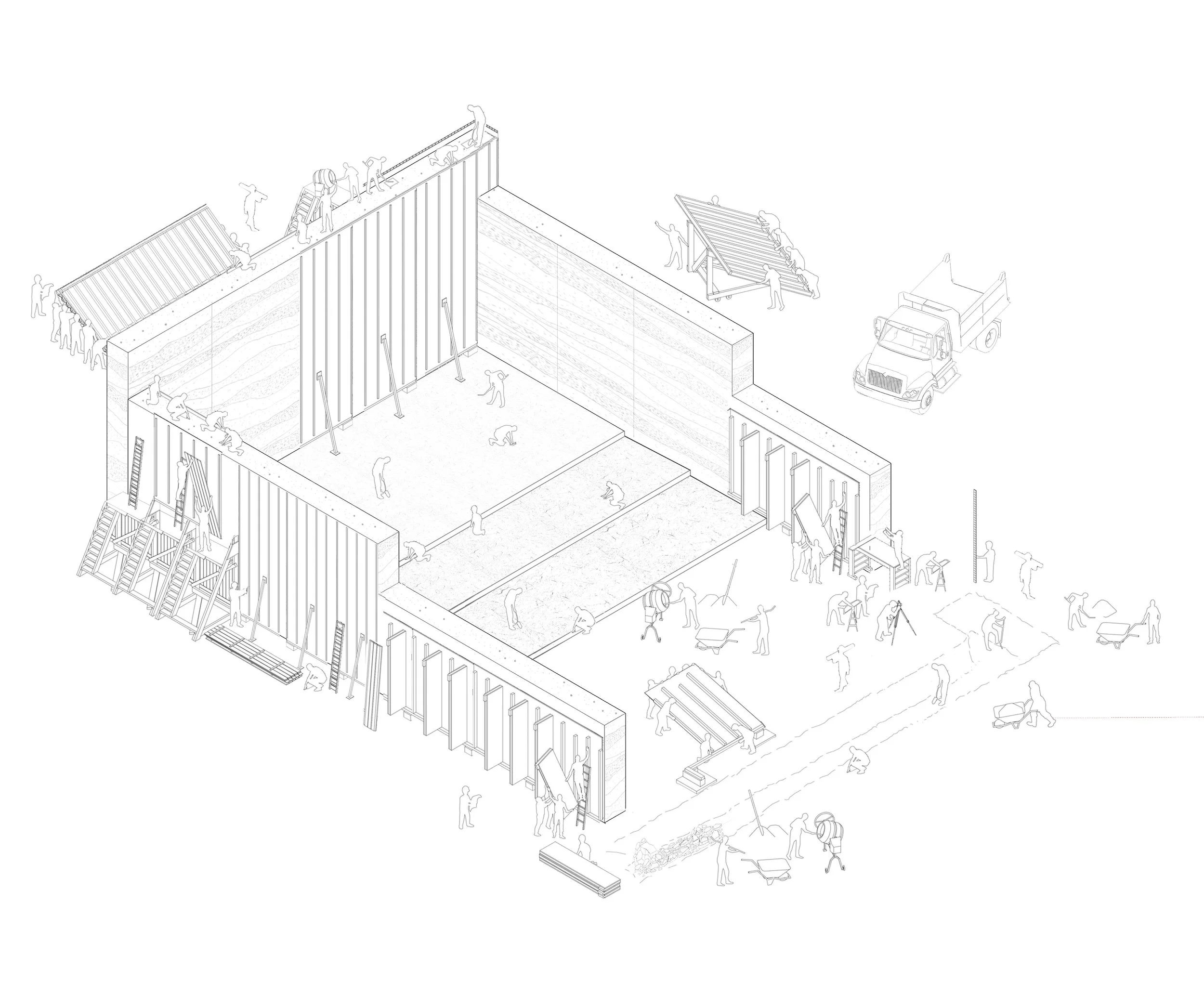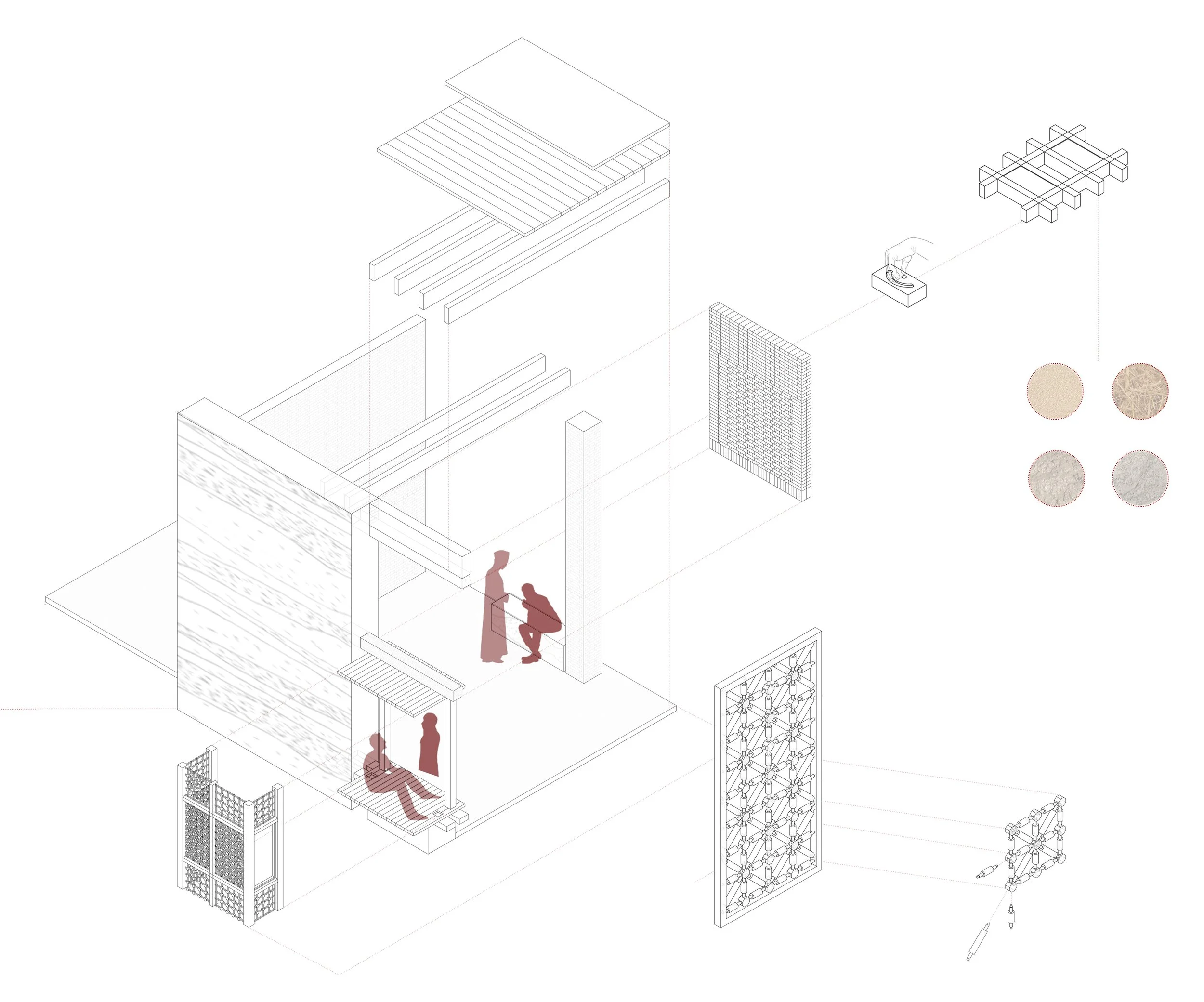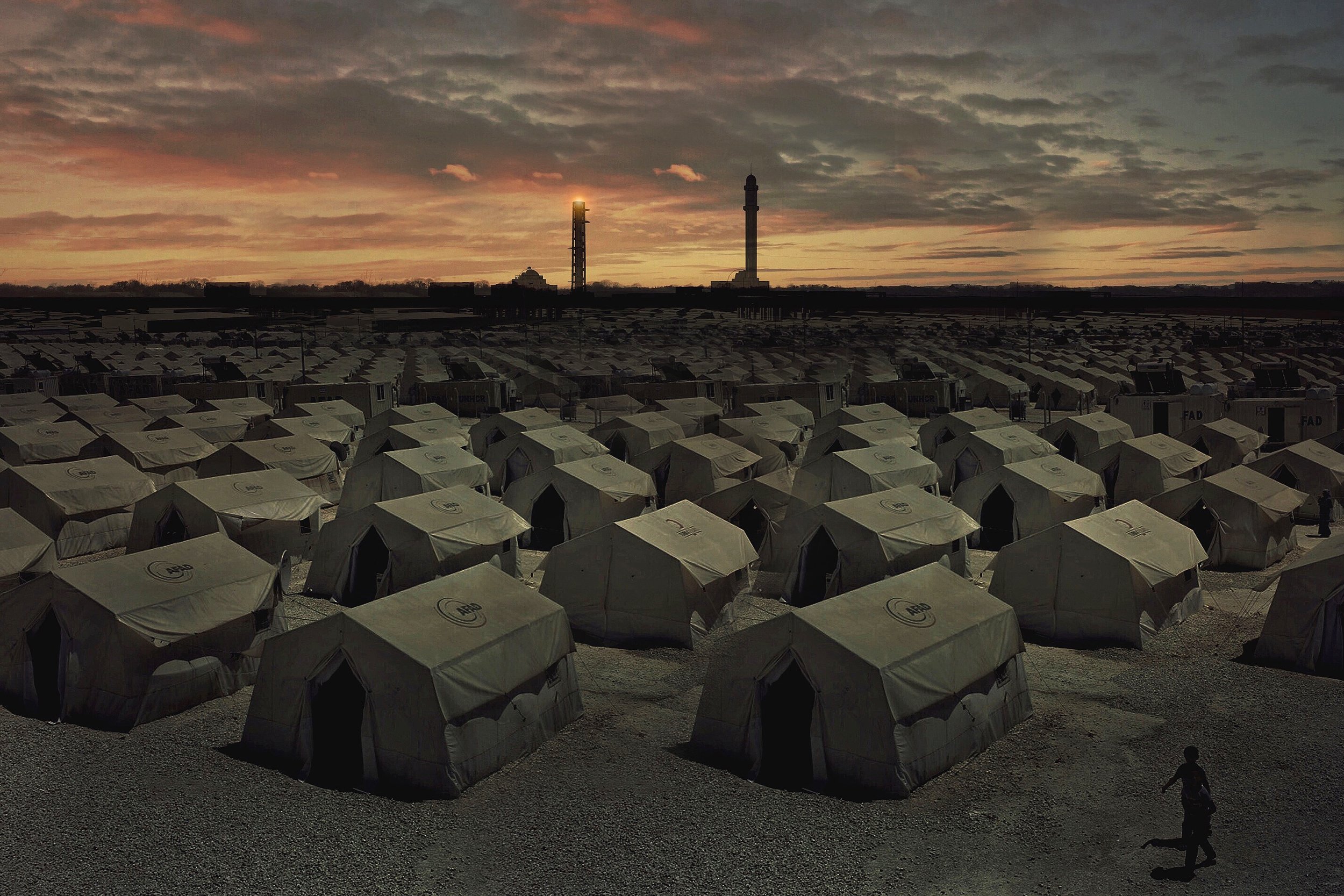
A torch lit on its peak each night, a sign of hope through light in the dark.
zero-point catalyst
Addressing post emergency needs through self-reliance of internally displaced Syrians.
Since the Syrian civil war began in 2011, it has had permanent effects on surrounding nations, people and architecture. Due to unethical actions of nations walling borders, many remain trapped at Syria’s front lines with limited humanitarian aid access. This thesis aims to address the post-emergency needs of internally displaced Syrians located at the Syrian-Turkish border through the concept of self-reliance. The key design intent is to acknowledge architecture’s role in self-sufficiency through construction and local materials on site. The catalytic concept is to formalise the permanent growth and integrate the displaced settlements through spaces that encourage peace and healing in order to regain ownership, identity of life and living.
A zero-point delivery system exists where Syria collects supplies from the UN Transshipment hub on Turkey’s side of the border (650m away from site) and drives back into Syria, cutting through our site. Border towns by nature have interesting opportunities to be contemporary cities. Emergencies such as this have a culture of being fixed quickly with temporary solutions to long term problems. However, the solutions tend to remain the same once into the post-emergency phase; resulting in a state of permanent transition. There are specific needs for IDPs. They in nature are different from refugees as external aid is not obliged to help them. In addition, their unstable governance means self-reliance is a tangible solution, if not the most. Developing post-emergency needs of dignity and hope are critical in self-reliance. Alongside generating a new identity that the people may resonate with. Situations such as this tend to be multi-faceted in nature from social, economic and political standpoints. So how can architecture help?
This thesis attempts to develop architecture that can play a role is rebuilding dignity, identity and hope through its spaces and construction to initiate self-reliant concepts through a catalyst.
architecture (thesis, 2018)
process
materials & construction
timeline: from transient tents to permanent homes

2017: Water points along main circulation routes become key social and communal points where catalyst can start. Catalyst begins with the largest water point, adjacent to public plazas and separated by the street axis and mosque. Neighbouring facilities include schools, markets, kitchens and clinics, the catalyst expanding on the existing infrastructure.
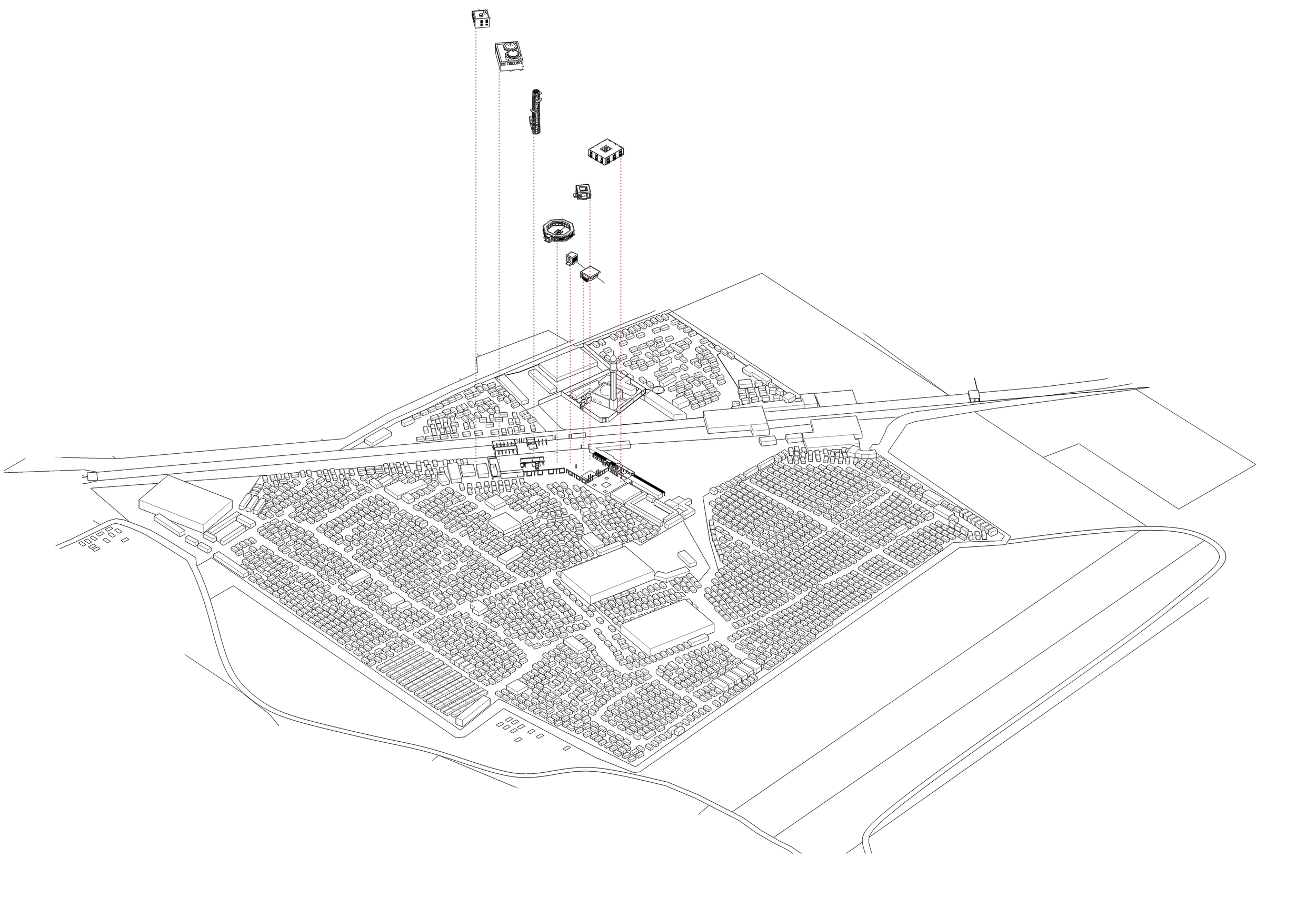
2022: Site design gradually built in phases. Construction by IDPs themselves to create a sense of ownership and develop construction skills. The site will then be built in phases of construction, staring with the staff lodge that acts as a supporting facility to lead the building of the rest of the catalyst.

2025: Typical water collection spaces (catalysts) are constructed around the site first to initiate growth and rebuilding their homes with construction skills around modules. The typical module from the site is replicated and dispersed around the site to initiate the permanency.

2030: Tents are converted into permanent homes and more catalytic modules are dispersed through the site, each taking on its own morphological changes. It explores opportunities to enable people to design the home to their needs and adapt the skills they learnt and materials used for themselves. New typologies of homes are created, the building footprint limited to the boundaries of the tent. It gives a sense of ownership and attachment, empowering them to take the first step into making it a home depending on needs, identity or sense of familiarity.

2045: As permanency is formalised through the homes instead of tents, Bab Al-Salam IDP camp has transformed into a thriving bordering town through facilities such as the extended souk street, encouraging exchange and trade with Turkey’s bordering camps and cities.

2050: As with time, the boundary of the camp starts shifting outwards and continues to grow. These new smaller typologies create more dynamic occupancies and shared spaces, resulting in new cultures and way of living. This makes up a contemporary border town created by displaced Syrians themselves who have settled permanently.




